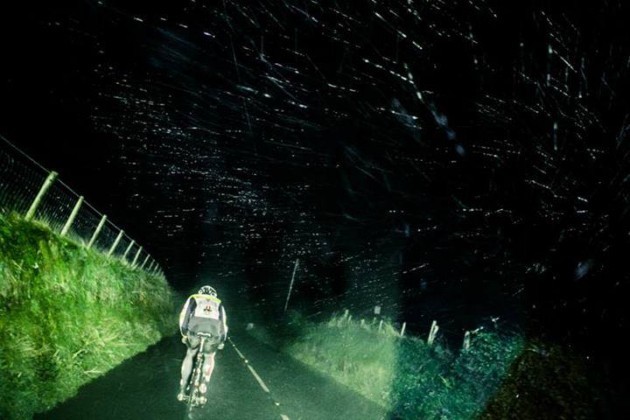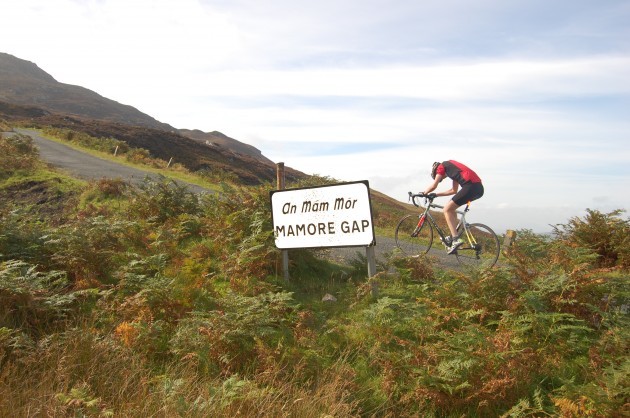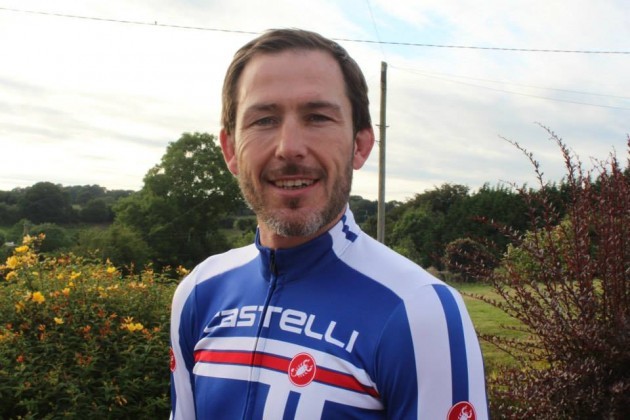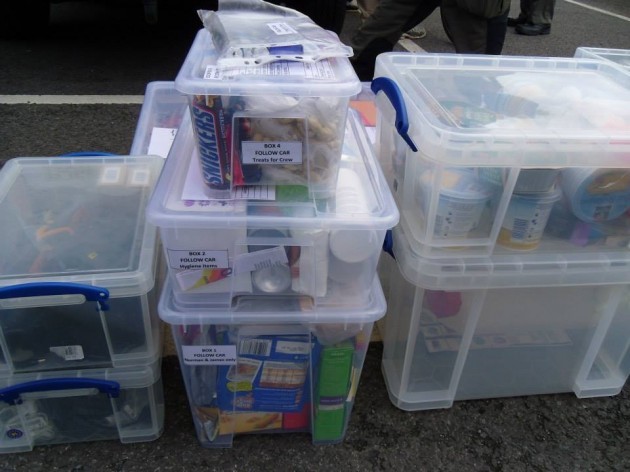“It’s the middle of the night; it’s wet, it’s miserable, it’s cold. You’ve cycled 200 miles and you’ve a long way to go yet.”
THIS WEEKEND WILL bring Ireland’s most extreme race back to the start line again.
What makes the Race Around Ireland extreme? At its fastest, it’s four-day endurance cycle up mountains, through headwinds and over 1,350 miles of Ireland’s highways and byways. Food is something to be shovelled in, barely enjoyed and sleep is made a rare luxury that briefly breaks the rhythm of pedal, pedal, pedal, pedal….
Obviously, this is not a race you should just roll up to and enter on the day. But for those of you who enjoy a challenge of body and mind, there’s always next year.
Donncha Cuttriss knows what it takes. He says it’s about much more than simply studying the gradients and knowing the route. It’s about being adaptable and ultra-determined.
“You can’t really say there’s any toughest point,” says the only Irishman to complete the race three times.
“You could come to the gap at Mamore, which might [technically] be one of the toughest points, but you arrive there wide awake and feeling great. Then you could come to a small climb down in Kerry, be at your lowest point in the whole race, and that could end up being the toughest point for you – when it’s raining, miserable and cold.
“Every year I come up to the Wicklow Mountains and you could say that’s the toughest part: you’re coming up the Shay Elliot, up Sally Gap and Aughavannagh. You could be miserable, but every time I get to there I’m feeling brilliant because you’re after doing 1100 miles already.”
Mountains are a relatively exotic concept for Cuttriss these days. Working for the UN and based in The Hague, he has decided to sit out this year’s epic cycle. However, he will still have a front row seat, as part of the support crew for his brother Jim.
As far as training goes, Cuttriss says the secret is consistency. A race that demands exertions that last up to 30 hours in one sitting takes a long time to train for. So he advises a long-term approach of all-round fitness rather than any system of building up and tapering distances to suit. This race will demand every fibre, so nurture them.
“He was phenomenally strong, much stronger than me,” he says of his brother Jim, former flanker with Sunday’s Well rugby club.
“Sitting in a saddle, he can cycle uphill much more easily than I can.
“I wouldn’t recommend people going out every weekend doing long rides – 24 hours, 12 hours – really beating your body up. You can only prepare so much.
“I think it’s much, much better to do two to three hours in the morning, two to three hours in the evening and get a rest in between. Even on the weekend, the same. If you’re doing six hours on a Saturday and six Sunday, that’s good.
“Coming up to the race, six weeks or before, it’s good to do 12 hours, maybe a 24-hour, but it’s important not to be doing too much mileage and focus on your strength. If you’re getting stronger, your endurance comes along as well.”
Strength is invaluable. Even more so in mind than in body.
“No matter how physically prepared you are or if you’re in fantastic shape you’re still going to suffer from lack of sleep.
“The biggest problem is going to be staying on the bike for five or six days – you’ll get little muscle problems in your neck, your shoulders, your hands, all the little muscles, not the cycling muscles themselves.”
“You’re putting yourself in a position where you haven’t been before in your life. To be mentally tough when it’s wet and it’s raining – if you’re going around somewhere like the coast of Clare with a good 200 miles done but there’s still a long way to go.
“That’s when experience comes in as well. If you’ve done that before it gets easier. It’s not that you get tougher, it’s that you get used to dealing with those situations. When you’re down you start to realise that things can only get better and it always does.”
On the bike, only three things make the world seem a little brighter again. Simple pleasures like a gentle downhill slope or a hot meal.
Many riders, like Meathman Ciaran O’Reilly and reigning champion Chrstoph Strasser, sustain themselves on liquid only meals for the duration of the race. Again, Cuttriss says it’s a matter of personal choice.
“Going such a long way, you need to keep the intensity low, so you’re not burning too many calories.
“Then you don’t want to be eating too may solid foods that are hard to eat – like chicken, potatoes – especially when you’re eating constantly.
“Stuff that goes down easily like ham and cheese sandwiches, things that are soft. Egg and salmon I found was very good in the last few years, certain bars, you can eat these while you’re on the bike.”
“When you stop, the team could cook while you’re asleep or they could go up ahead and have a meal ready for you. Or sometimes to save time, you could get the lads to drive up ahead to a town, order food in a pub and then you’ve a hot dinner waiting for you.
“You park the bike outside, into the pub, dinner’s on the table, eat and off you go again.”
That’s a guaranteed morale-booster. And on top of cold, hard logistical support that’s the chief function of the crew.
Team Cuttriss should be at some sort of an advantage with brothers on either side of the divide. Knowing what makes a rider tick; when to prod and when to tread gently, when to encourage them into getting the pedals turned and when to say ‘it’s time to take a break’. Because what a rider does when he is not moving has a knock-on effect for everything.
‘Even if you get four hours sleep’
“The most important thing is that you need to be able to recover quickly,” says Cuttriss.
“That depends then on your physical ability. If you haven’t enough training done, you just won’t recover in enough time even if you get four to six hours sleep.”
“With two to three hours sleep you should be able to get a good recovery. If not you’ll have to take more time resting – that’s time you should be on the bike.”
“Just closing your eyes can make a huge difference. Often, you’d be falling asleep for ages and then you just lie down for 15 minutes and you get back on the bike and you’re flying again.”
The feat is an admirable one then, the secret to achieving it, simple.
“Once you’ve taken a bit of rest along the way you’ve actually recovered and you’re in a routine. By the time you get to the Wicklow Mountains it’s actually easy to get up them – you know you’ve only a few miles to go, you know you’re going to finish.
“That stage last year I was very relaxed over the last 30 miles, you know. It’s kind of funny, but after doing 1100 miles what’s another 250?
“Nothing.”





